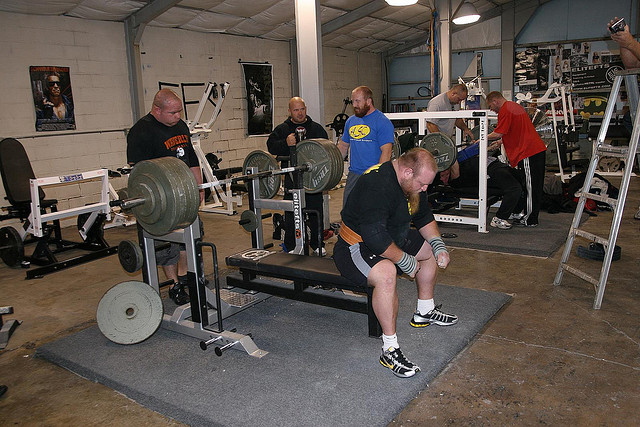
Most training articles and templates today are dedicated to shirt training. Because most of us compete in a bench shirt, it only seems logical. But there are many gains to be made both in and out of a shirt through proper training technique. Here at Lexen, we train raw for much of our upper body development, but by using both environments (the shirt and raw training), you can actually make personal records in each.
By designing our training in this fashion (using gear and raw maxes to develop our bench), both our elite and amateur lifters have hit some impressive numbers. Chuck Fought went from a 490 to a 535 raw bench and a 655 to a 715 in a shirt in 15 weeks. Personally, I went from a 570 to a 605 raw and an 800 to an 815 in a shirt. Our newer lifters made impressive progress as well. Nate Strong went from 335 to 365 raw and his shirted max went from 460 to 520. Veteran Danny Dague, who is 49 years old, went from 405 to 440 raw and 515 to 565 in a shirt. Substantial progress for three months work, wouldn’t you agree?
So how do you get both your raw and shirted bench to come up? Well for the main work, you must rotate your training. We try to do shirt work every third week, sometimes more depending on when the competition is. The real key is that we also rotate what portion of the lift gets concentrated on that work day. Usually, we do an exercise that hits the bottom portion of the lift followed by an exercise that focuses on the middle of the lift. Then we do an exercise that builds the top of the lift. We rotate them in this fashion in a three-week wave. We change bars, band tensions, chains, weight releasers, and anything else to our disposal.
Week 1 (lower): Cambered bar bench, real weight, 1RM
Week 2 (middle): Double purple bench with fat bar (roughly 200 lbs of band)
Week 3 (top): 3-board shirt work with fat bar (work up to a max with real weight)
The example above shows a sample three-week wave of max effort work to target different areas. It allows for heavy training for much longer periods of time because the emphasis has changed. We always try to keep our hands in a little closer than competition grip through most of the training cycle to become tricep dominate in our pressing. We have about 25 different variations of work to pick and choose from following this format.
When meets are far away, usually more than 12–15 weeks, it’s good to have a little extra volume with dumbbells and failure sets in your pressing exercises to promote hypertrophy and GPP. But 10–12 weeks out from a meet, the training will become more severe, especially for the other lifts (squats and deadlifts), so that volume must come down (but not be ignored). This is where bench only guys will differ because of less overall body work. Remember, the key is the total of the three lifts, so training must be a little more planned out for excess stress.
Assistance exercises must promote good form (which specific pressing reps will not do) and build up lagging muscle groups. I focus most of my energy on arms and lats for bench pressing and only do enough pectoral work to keep them healthy, especially close to meets. It’s also a great idea to have exercises built into your cycle that promote joint integrity and stability. I do a ton of external rotator work at home before bed (mini-workouts) as well as flexibility work to keep soreness and pulled muscles at bay.
In a 3–4 month period, there should be slight changes in your training. This variation will allow a longer term of growth. I usually go through phases where I will work on strength, speed, size, and most importantly, health. By making a 5–10 percent change in my training periodically, my body always comes back stronger. I try to never ignore any one area but just make one a little more important than another for a short time. This is a huge factor in consistent and long-term progress.
This layout has allowed my bench to go from 700 to 815 shirted and 570 to 600 raw in less than 18 months and has also worked for many of the developing lifters. I hold a great deal of value in being able to do things raw and knowing that I can walk into any environment and hold my own with or without the equipment.








